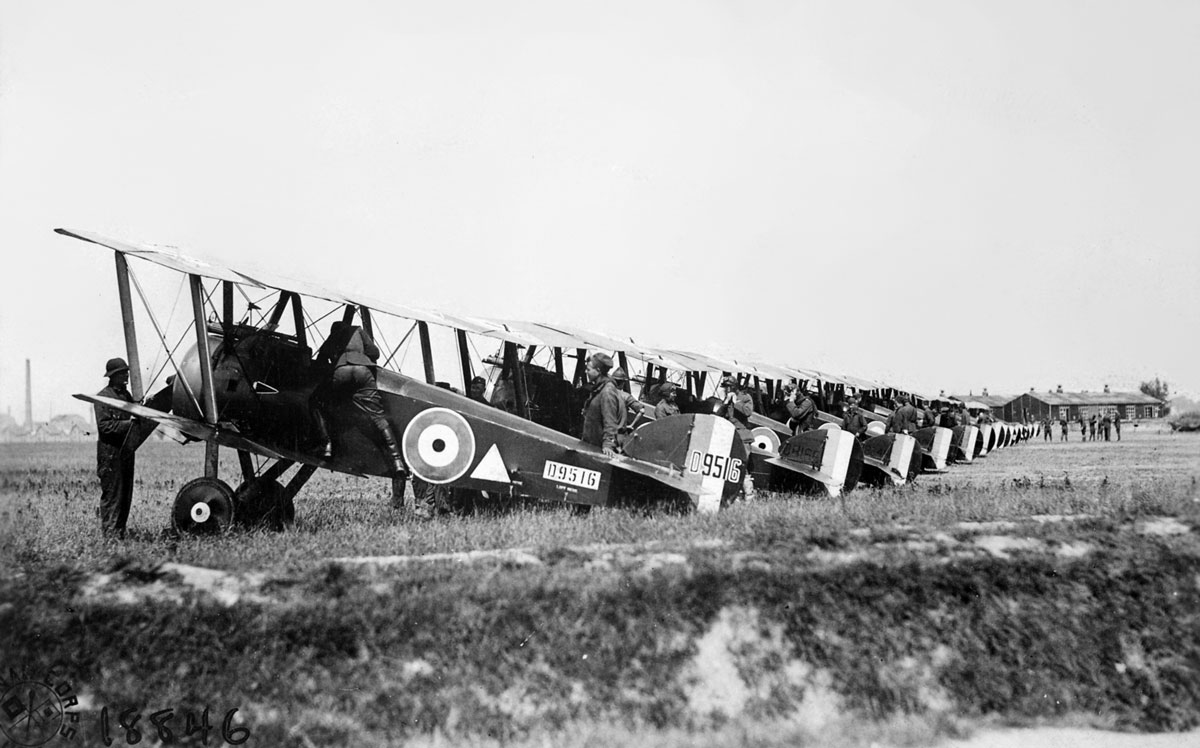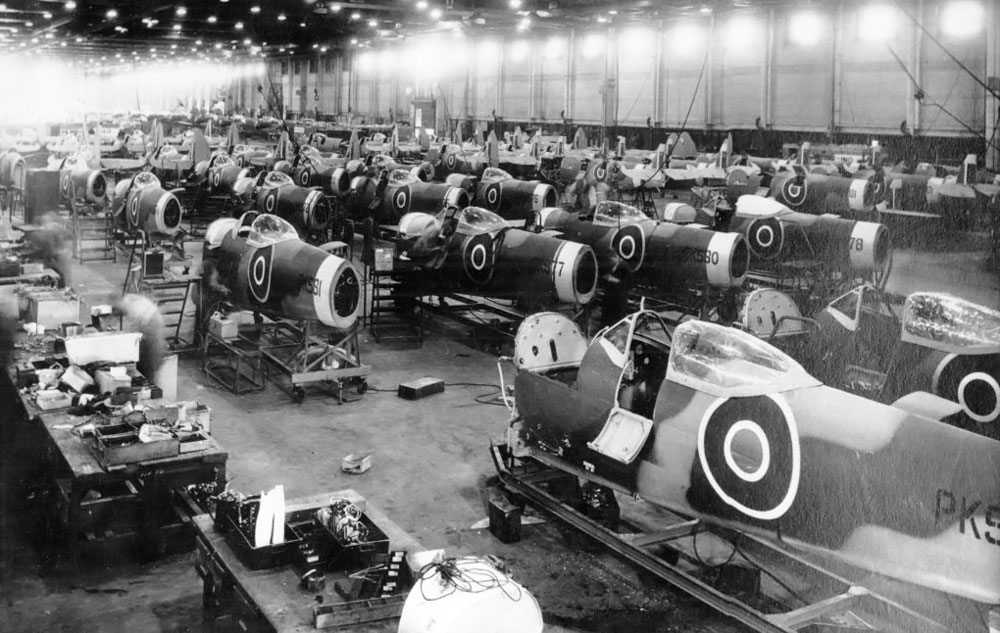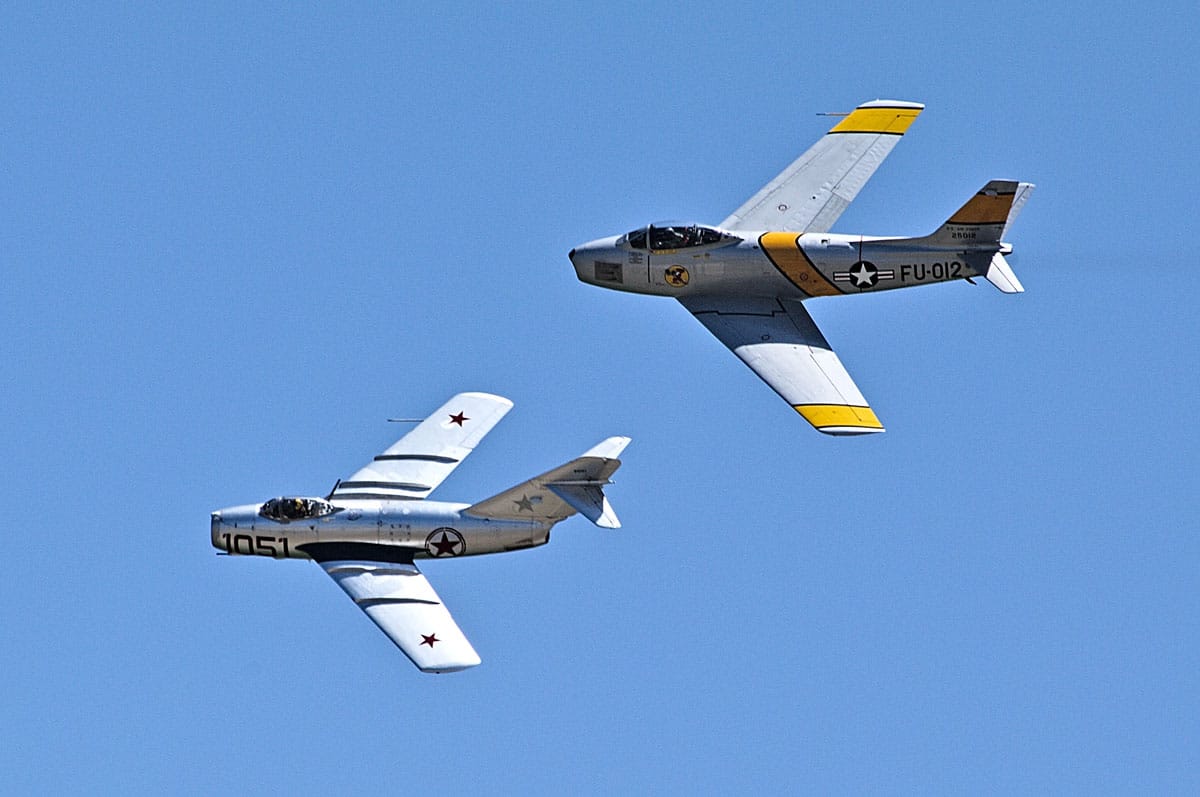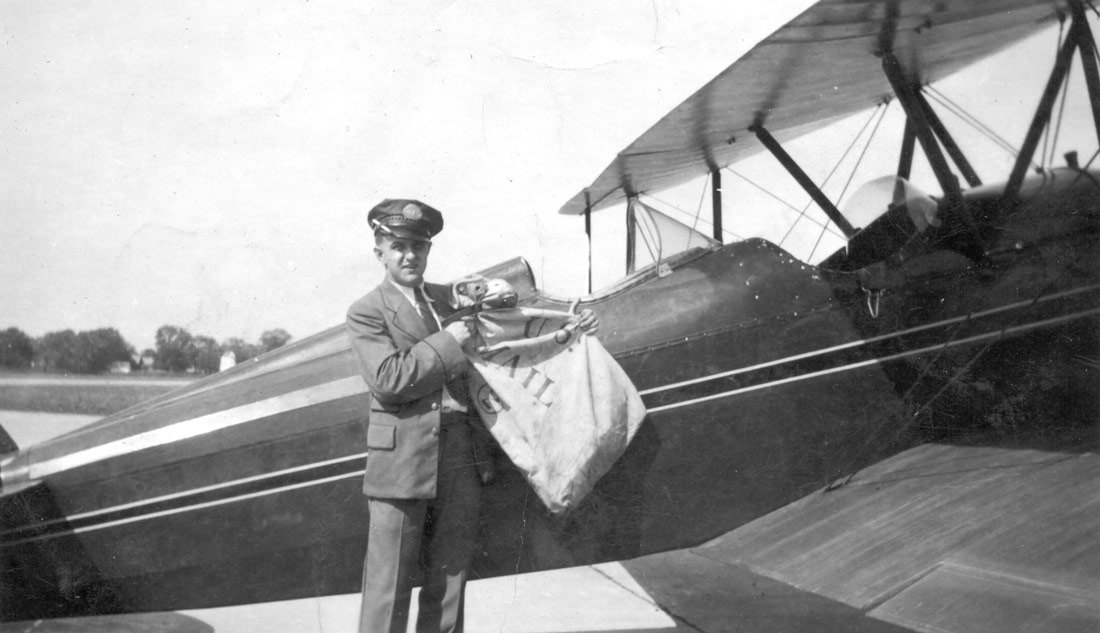Shadow factories all across Britain played a key role in ensuring that there were enough Supermarine Spitfires in the sky to push back the Luftwaffe.
Supermarine Spitfires are one of the most famous planes of World War II, and renowned for the part they played in defeating the Luftwaffe. Built to match and outperform the German equivalent, the Messerschmitt Bf 109, the Supermarine Spitfire still provides a nostalgic reminder of its role in halting Hitler’s plans to invade Blighty’s shores.
Hitler attempted to destroy Spitfire production during the war, by bombing prominent Spitfire factories, but shadow factories took their place and production continued. Sheds, workshops, garages, bus depots and even a hotel were used as bases to manufacture and assemble spitfires during the war.
The shadow factories, and the mainly unqualified young boys, girls, and women who worked in secret to build over 2000 Spitfires, were instrumental in winning the Battle of Britain.
People still love to see surviving Spitfires at air shows up and down the country, and some even take advantage of Spitfire flying experiences, such as those offered by Into The Blue. The Spitfire lives on and much is known about them. The Spitfire factories, however, get much less coverage. Read on to discover more about the making of the Spitfire and the birthplaces of these wonderful flying machines.
The Making of a Masterpiece
R J Mitchell, the designer of the Supermarine Spitfire, learned his trade during WWI. Conscious of the fragility of early planes, he never sacrificed his concern for the pilot. His masterpiece, the Supermarine Spitfire, was created with a robust and adaptable design. The design of the Supermarine Spitfire was so adaptable that it was the only fighter in production prior to, throughout, and after the war.
Supermarine was one of the firms competing to deliver a new fighter aircraft prototype. They actually delivered their prototype late and it was well below specification, as were the prototypes offered by three other different sources. At this point, the Air Ministry went so far as to consider ordering aircraft from Poland. Then Supermarine delivered Mitchell’s radical new design. And so, the miraculous British flying machine, the Spitfire, was born.
Adapted for different missions, some had machine guns, cannons, rockets, and bombs. Some were designed specifically for high altitude, while others had their design adapted for a ground attack. The various adaptations eventually reached Mark 24! To give a sense of the constantly evolving design, throughout the war there were 13 different designs of the propeller, and the windscreen plastic was replaced with armored glass. Mark V was the most common type ever produced (nearly 6,500 in total), and in all, 20,351 Spitfires were produced for the RAF.
The complexity of the Spitfire’s design translated into its production time. The Spitfire took 13,000 man-hours to produce,1 two-and-a-half times as long to make as a Hurricane. It took the Germans 4,000 man-hours to make the equivalent Messerschmitt Bf 109.
 The F.1 Sopwith Camel: The Unruly Stallion of WWI
The F.1 Sopwith Camel: The Unruly Stallion of WWI
The Sopwith Camel became one of the most iconic aircraft in WWI due to its well-earned reputations, both good and bad, with the pilots who flew it. Though the fighter pilots flying Sopwith Camels accounted for the most kills of any WWI aircraft (1,294 – an average of 76 kills a month for the 17 months it was in service), it also killed almost as many of its own pilots as the enemy did [Read More]
The Great British Whip-Round
Much is known about the making of the Spitfire, but much less is known about its funding. The BBC’s report, Spitfire funds: The ‘whip-round’ that won the war?,2 relays an interesting story indeed. WW1 and the Great Depression of the 1920s had left Britain with huge debts. But, when the intentions of Hitler to invade Britain became clear, the British Government set up the Ministry of Aircraft Production. Its first minister, Lord Beaverbrook, pushed for aircraft production to have priority over all other munitions.
Lord Beaverbrook was also responsible for pushing the idea of public appeals to source raw materials and encourage thriftiness to help the war effort. The British public, seeing German planes flying overhead, were eager to help get more British planes in the air. Over 1,400 appeals for funding were set up, attracting donations ranging from British children’s pocket money to donations from entire countries. Uruguay funded the production of 17 Spitfires. Trinidad, the Gold Coast, and Hong Kong donated enough for entire squadrons.
An arbitrary figure of £5,000 was the price given for the production of each aircraft during the appeal (little resemblance to the actual cost, which was closer to £10K), and to encourage even small donations, individual aircraft parts were listed with random costs, from wings at £2,000 to a rivet for a sixpence. Around £13 million was raised in total.
Large contributors were able to have a dedication put on the Spitfire. It wasn’t just money that people contributed. Raw materials were also in short supply. Even saucepans and cooking utensils3 were handed over for melting down to be re-used in the building of Spitfires.
The First Spitfire Factories

The first prototype, K5054, took flight on 5th March 1936 at Eastleigh in Hampshire. Following some tweaks to the design, on 3rd June an order for 310 units was made. Initial full-scale production of the Spitfire (K9787), rolled off the production line at Woolston, Southampton in 1938. It took Submarine two years to prepare for production, because of the complex design, which included thin wings covered with a stressed metal skin, and a revolutionary elliptical wing.
At the same time, the Air Ministry acquired land consisting of farm fields and a sewage treatment works next to Castle Bromwich Aerodrome in Birmingham. Here a secondary factory was set up to supplement the production of Spitfires at Woolston.
The setting up of the Birmingham factory wasn’t without its problems. In 1940, when the first Spitfires were being built here, the factory itself was still incomplete and the skilled workforce continually threatened strikes for better pay. As a result, the Ministry took control from Morris Motors, and although it took some time, were able to resolve the factory and workforce problems. It became the largest Spitfire factory in the UK and built over half of the 20,000+ Spitfires produced.
The Bombing of Woolston
During the Battle of Britain, the main manufacturing plants of the Spitfire at Woolston and Itchen, near Southampton became the target of Luftwaffe bombing raids. Various bombing raids in the summer of 1940 failed to hit, but on 24th and 26th September 1940, both factories were destroyed. More than 100 workers (about a quarter of the workforce) were killed.
After Woolston was hit, Birmingham became the main center for Spitfire production. Birmingham didn’t escape attempted bombing raids by the Germans, and on several occasions, there were some near misses. Brutal bombing raids killed some of the factories workers, such as a raid on the night of August 13th, 1940 that claimed the lives of six men. Although the Birmingham factory was high on the German’s bombing hit list, it miraculously escaped relatively unscathed.
Following the destruction of Woolston, Lord Beaverbrook, the minister of aircraft production at the time, immediately ordered a complete dispersal of the entire Spitfire works, with many local garages and large store premises being requisitioned to help maintain production.
The Small Factory Facilities Born From Woolston
The relocation of much of Woolston’s and Itchen’s production happened quickly after the factories were destroyed by the Luftwaffe’s dogged bombing raids. Within a matter of weeks alternative sites had been found, and despite the loss of their colleagues, surviving Spitfire factory workers worked day and night to continue Spitfire production.
The dispersal of the Spitfire operation required a radical rethink and was designed to move the operation away from the South Coast and into premises that were harder to identify by air. It was a plan that worked. Workers and factory machinery were moved to 28 sites around Southampton as well as Reading, Hungerford, Newbury, Salisbury, and Winchester.
The bulk of Spitfire production was moved to Castle Bromwich in the West Midlands, but by the end of the war, 8,000 planes had been built in the dispersal factories around Southampton. A BBC report on the Spitfire production miracle elaborates, “like the ‘little ships’ had done at Dunkirk, it was the unsung little workshops which played a crucial part of the legendary victory of the Battle of Britain.”4
In an article back in 2010, published in The Telegraph, one worker recalled, “We worked flat out, we knew we had to. The Germans were flying over us every day. We could see what was happening in the skies over our head and how important it was to keep building the planes.“5
Another account of working in the Spitfire factories told of fitters staying at the factory, sleeping on a bench when tired, and then going back to the production line.6 Some did not go home throughout the duration of the battle!
The Secret Assembly Line
The dispersal of the factories for Spitfire production was a major feat in logistical planning and production engineering. Spitfire parts were made in one of 28 different locations. The full dispersal of Spitfire production spread across several southern counties, with centers at Salisbury, Reading, Newbury, and Trowbridge in addition to the Southampton area.
A garage in Reading specialized in the manufacture of fuselages, while another purpose-built building in the same area installed engines. Another garage in Salisbury became the sole producer of leading-edge fuel tanks. Spitfire assembly and testing in the South was carried out at Eastleigh in Hampshire. And all of the areas were controlled from the drawing office and design operation at Hursley Park.

The Secret Spitfires
Almost 10 percent of British civilians during World War II signed the Official Secrets Act, and deep in the countryside of Wiltshire, specially chosen members of the public were secretly building Spitfires. Shadow factories in small towns and villages were set up in sheds, workshops, garages, bus depots and even in a hotel. Workers were sworn to high levels of secrecy.
In 2016, a documentary film was released, detailing the stories of young girls, boys, women and a handful of men, building Spitfires in Salisbury during the war. The documentary Secret Spitfires contains unique archive footage and images and tells the story through testaments of surviving workers. These are tales that need to be kept alive to show future generations what can be achieved in times of adversity. The Spitfire factories of World War II are as important to history as the planes themselves.
Featured Image: Courtesy of Birmingham Museums Trust, CC BY-SA 4.0
Resources and References:
1 – “Building Spitfires, Slowly” – Air and Space, Smithsonian, Retrieved 11-6-17
2 – “Spitfire funds: The ‘whip-round’ that won the war?” – BBC, Retrieved 11-6-17
3 – “How our saucepans built the Spitfires that won the Battle of Britain” – Birmingham Mail, Retrieved 11-8-17
4 – “Spitfire Miracle Which Helped Win the Battle of Britain” – BBC, Retrieved 11-9-17
5 – “The Spitfire Factory Workers Who Helped Win the Battle of Britain” – The Telegraph, Retrieved 11-9-17
6 – “From Farmhand to Making Spitfires” – BBC, Retrieved 11-9-17

Focke-Wulf Fw 190: The Butcher Bird of WWII
The Focke-Wulf Fw 190 Würger (Shrike in English) has become one of the most iconic military aircraft in world history since it first inspired fear in the Allied forces throughout all of World War II. Named for the shrike (nicknamed the “butcher bird”), a small carnivorous bird of prey known for impaling its prey on spikes, the Fw 190 was one of the only radial engine fighter aircraft used in Europe at the time. Though used successfully by the US Navy… [Read More]














Do you have any information about Spitfire parts being manufactured in Bedford.
My parents both worked on some part of the tail plane.
Shadow Factory refers to Castle Bromwich not Southampton. The workshops and sheds used surrounding Soton post blitz were termed Dispersal Factories.
I know someone whose father worked in what he called a shadow factory in Marlow in Buckinghamshire. I’d have thought that factory was part of the Southampton re-deployment.
Shadow factory means a site shadowing the parent factory such as South Marston shadowed the Castle Bromwich factory. Spitfires or parts of were also made in Trowbridge,Reading, Yate near to Bristol, etc
Thank you Mr James for this great article. I’m trying to figure out where my late dad worked during the war. He & our mother emigrated to CA then US in 1951, and my brothers and I were all born in the US, so we’ve only heard the stories of his apprenticeship and hiring at a factory that we think was somewhere along the Thames, between south London and his boyhood home in Southend-on-Sea. I now understand that shadow factories really dispersed the work, and I do know that the factory worked in specialized in making seats for the Spitfire. Our favorite part of the story was his “entrance exam” — at age 14 (in 1939) he was given a length of metal and instructed to fashion something with it. Apparently he did okay, as they gave him an apprenticeship. He was a successful tool & die machinist for the rest of his working life, and started his own company in the 1970’s in San Diego, California.